Our Stories
Recent Articles
History & Discoveries
A Hallowed Figure in American Art and Culture: the Bald Eagle
The bald eagle is painted, sculpted and carved throughout the Capitol campus. Its white head, wide wingspan and gnarled talons are ubiquitous.
History & Discoveries
Unearthing Capitol Hill's Buried History
Visit Congressional Cemetery and discover the many connections the Architect of the Capitol has to this hallowed ground.
History & Discoveries
The U.S. Capitol Rotunda: Celebrating 200 Years as the Heart of American Democracy
The Rotunda was completed under the direction of Charles Bulfinch by the time of the visit of the Marquis de Lafayette in October 1824.
History & Discoveries
The Liberty Cap: Symbol of American Freedom
The 2024 Olympic mascot is a conical cap, the Phryge, a French symbol of freedom, but it symbolized freedom in the United States before the French adopted it.

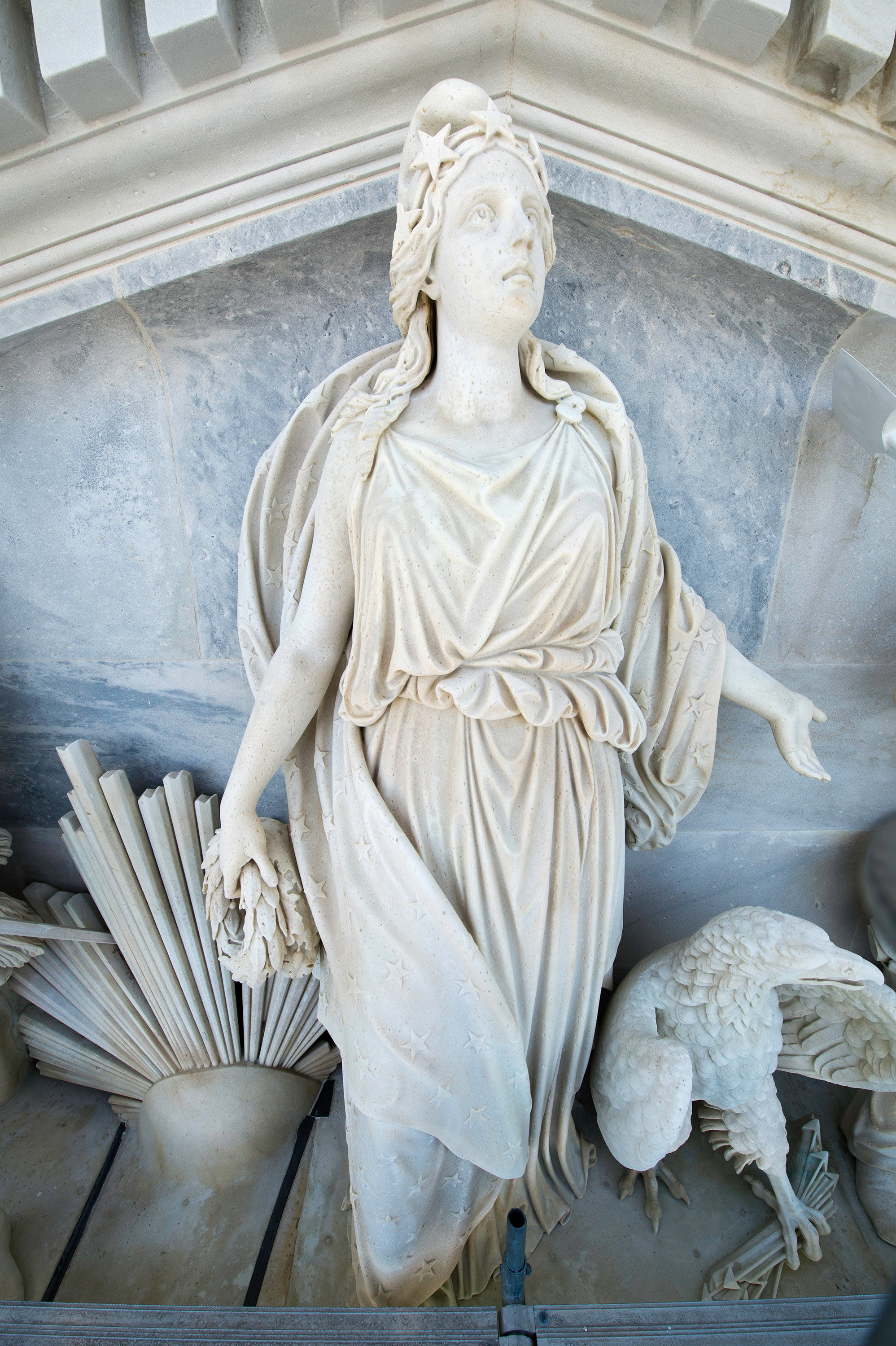
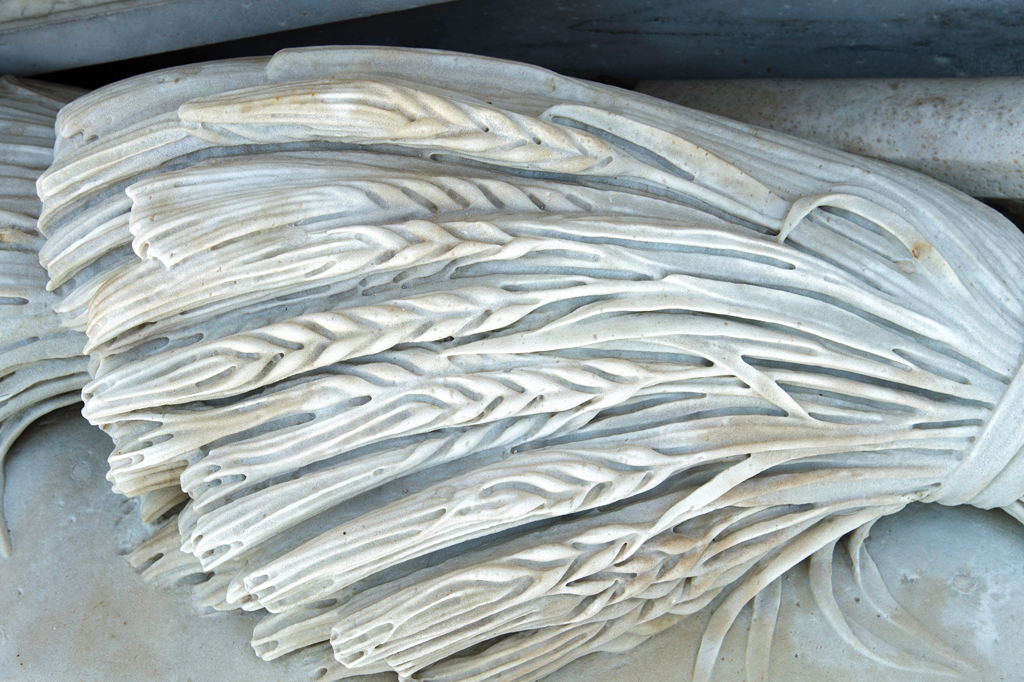
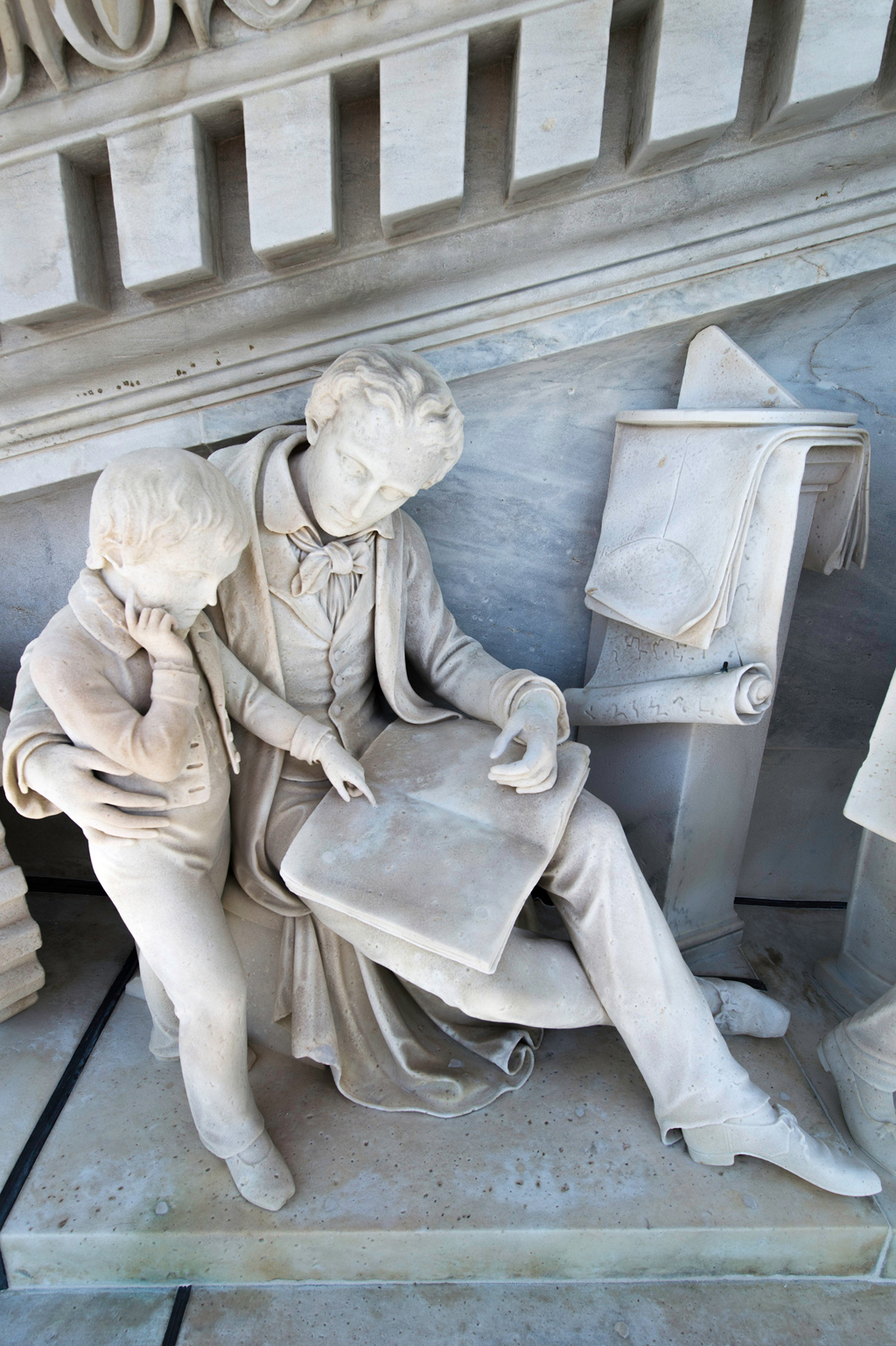
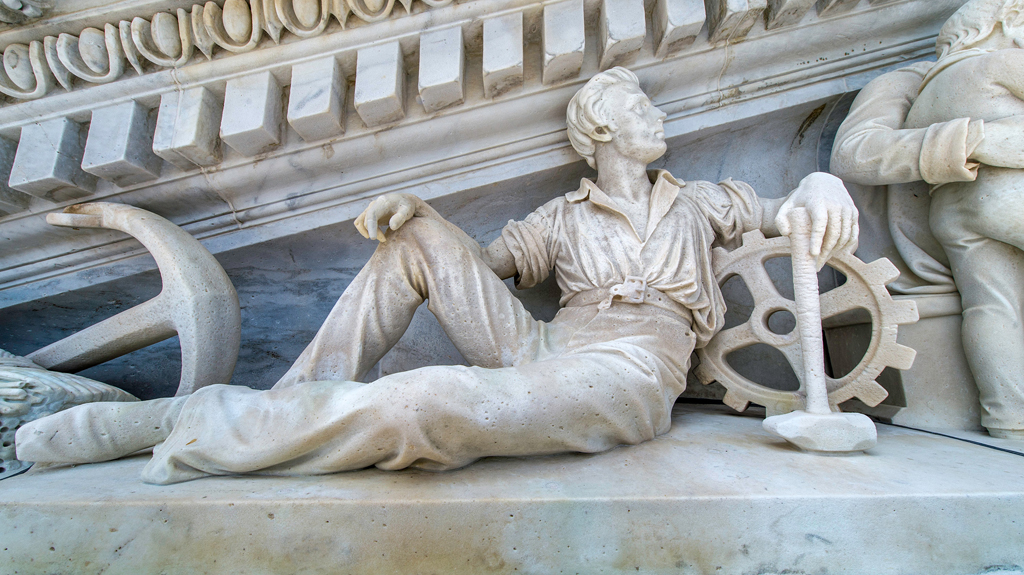
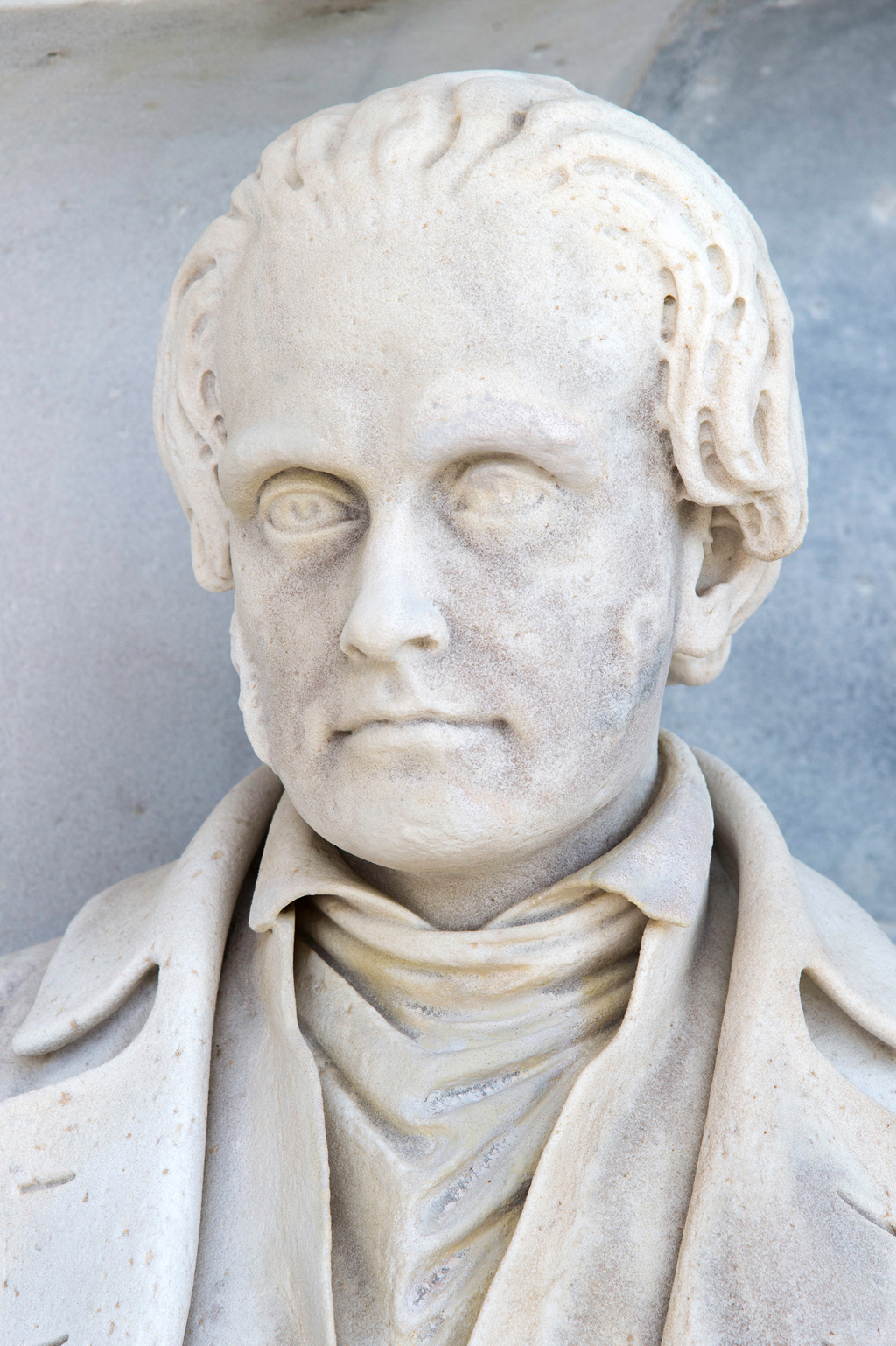
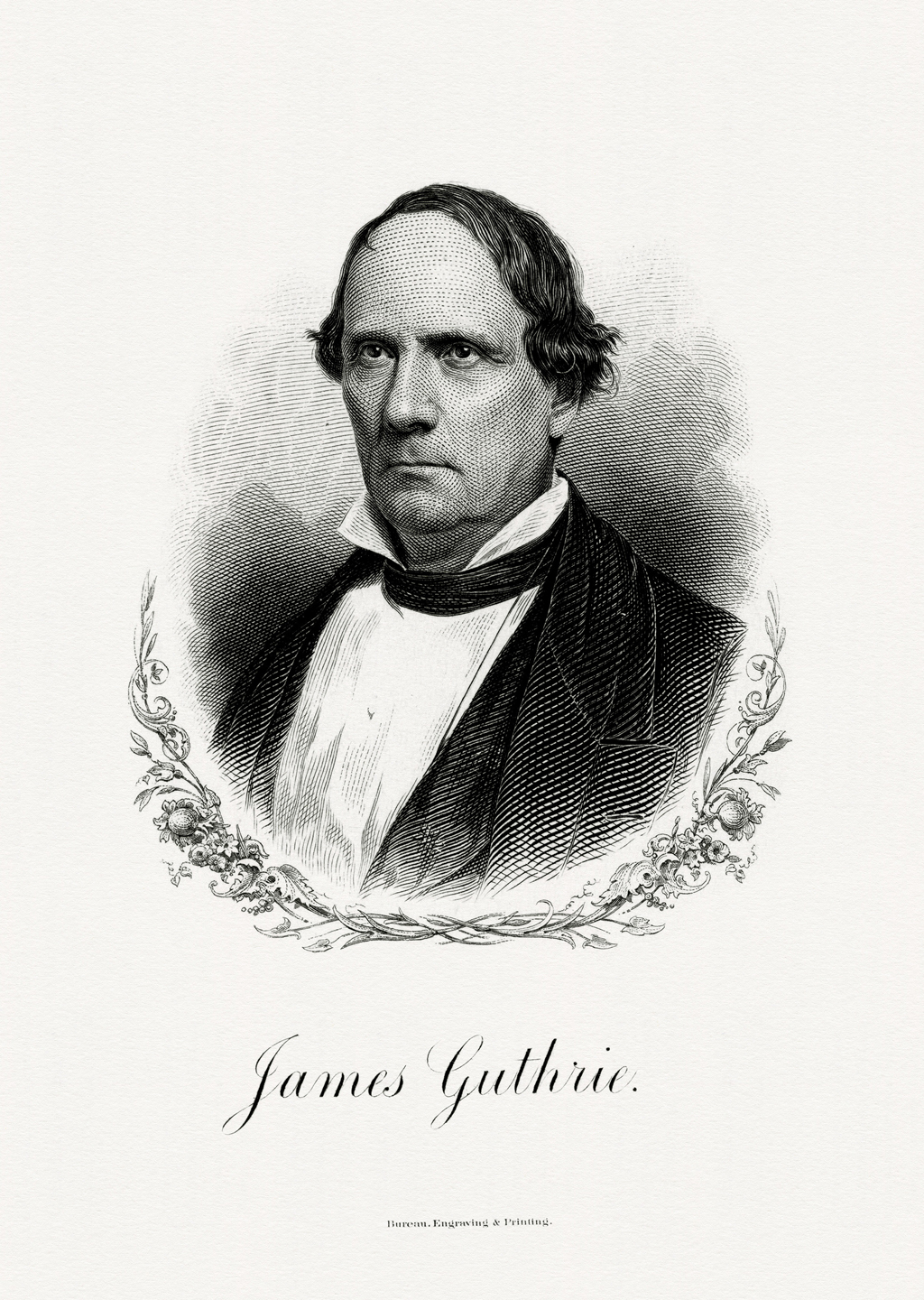


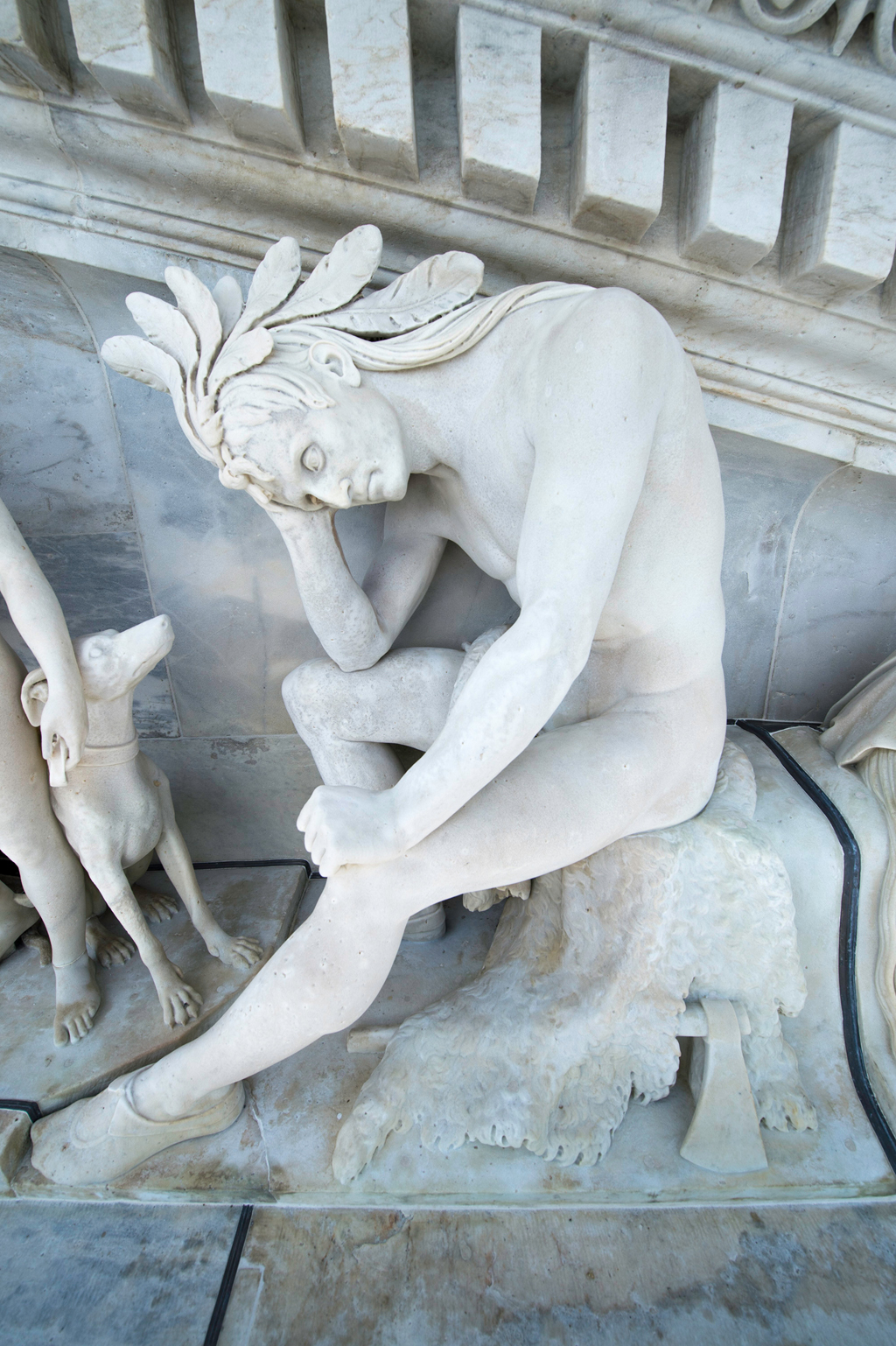




Comments
I'm speculating that the numbers on the block and the coin bags in the Capitol Extension Pediment were a praise to the Pierce Administration's success in negotiating the Canadian Reciprocity Treaty of 1854 (signed June 5). Reportedly, Mr. William L. Marcy ( Sec. of State) had bribed Halifax, Fredericton, and St. John's in order to facilitate passage; while Lord Elgin floated it through the U.S. Senate on an ocean of Champagne. I have no actual knowledge, but suggest that the coin bags represent the small relative price paid for the greater speculation of what the Treaty would have been sold as being worth to the USA at the time. - Joe
These close-up photos are beautiful and your descriptions made me want to see every detail. I would love to see this photo spread (and more) as a special exhibit in the visitors’ center. Explanatory notes accompanying the exhibit would reveal the thinking of the time and help us understand how ideas change over a historical period.
Add new comment